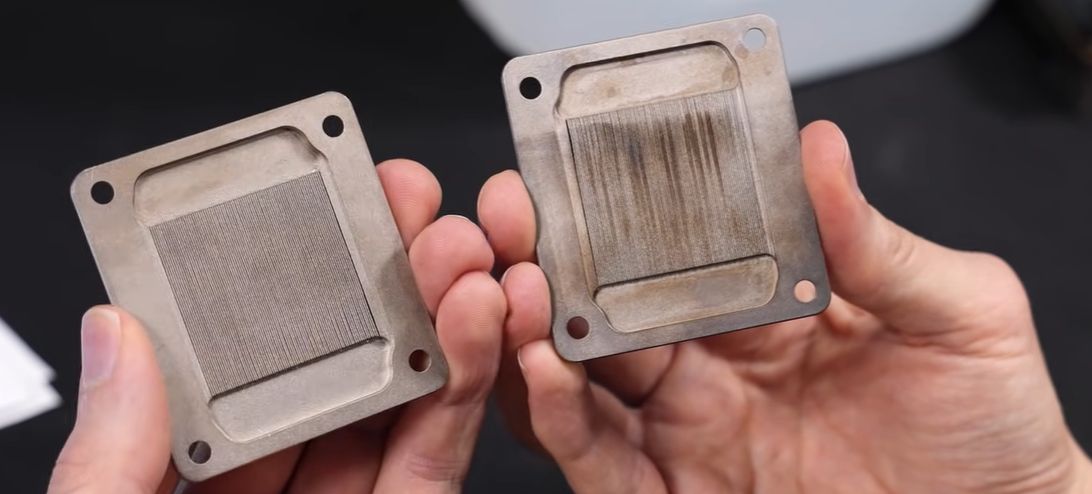Preventing Galvanic Corrosion In Water Cooling Loops
Water is an excellent coolant, but the flip side is that it is also an excellent solvent. This, in short, is why any water cooling loop is also a prime candidate for an interesting introduction to the galvanic metal series, resulting in severe corrosion that commences immediately. In a recent video by [der8aer], this issue is demonstrated using a GPU cold plate. The part is made out of nickel-plated copper and features many small channels to increase surface area with the coolant.
Theoretically, if one were to use distilled water in a coolant loop that contains a single type of metal (like copper), there would be no issue. As [der8auer] points out, fittings, radiators, and the cooling block are nearly always made of various metals and alloys like brass, for example. This thus creates the setup for galvanic corrosion, whereby one metal acts as the anode and the other as a cathode. While this is desirable in batteries, for a cooling loop, this means that the water strips metal ions off the anode and deposits them on the cathode metal.
The nickel-plated cold plate should be immune to this if the plating were perfect. However, as demonstrated in the video, even a brief exposure to distilled water at 60°C induced strong galvanic corrosion. Analysis in an SEM showed that the imperfect nickel plating allowed copper ions to be dissolved into the water before being deposited on top of the nickel (cathode). In a comparison with another sample that had a coolant with corrosion inhibitor (DP Ultra) used, no such corrosion was observed, even after much longer exposure.
This DP Ultra coolant is mostly distilled water but has glycol added. The glycol improves the pH and coats surfaces to prevent galvanic corrosion. The other element is benzotriazole, which provides similar benefits. Of course, each corrosion inhibitor targets a specific environment, and there is also the issue with organic films forming, which may require biocides to be added. As usual, water cooling has more subtlety than you’d expect.




Post Comment